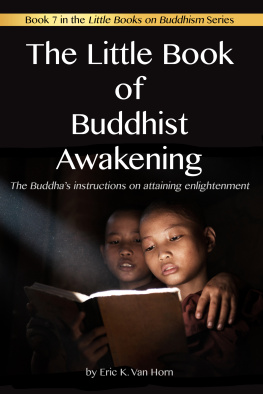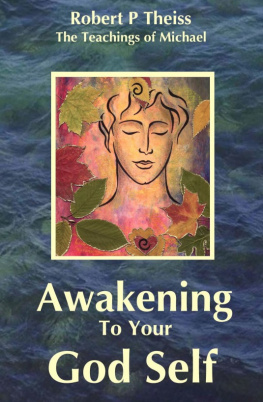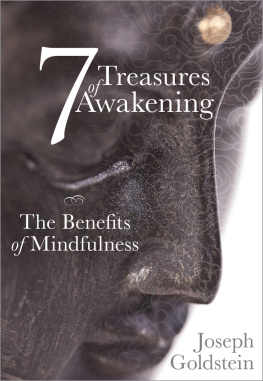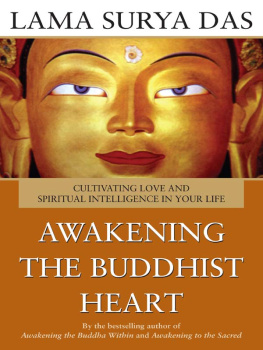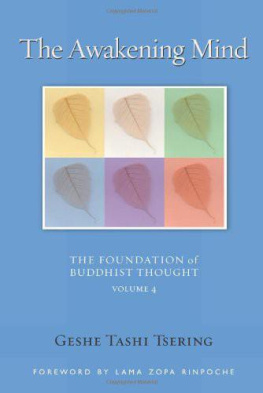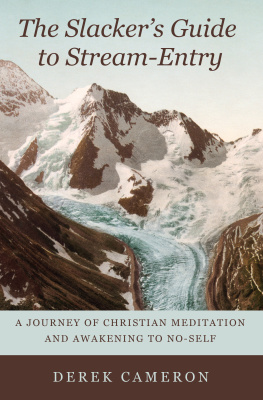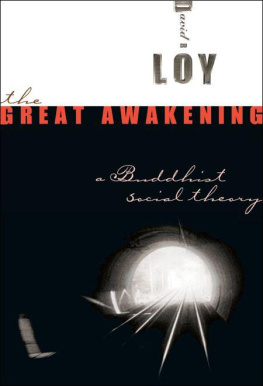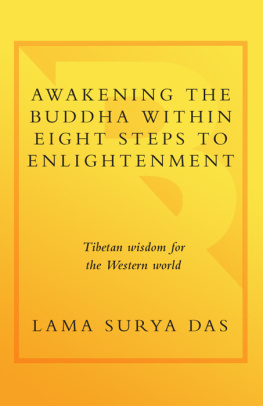Bhikkhus, what do you think, which is more: the little bit of soil that I have taken up in my fingernail or this great earth?
Venerable sir, the great earth is more. The little bit of soil that the Blessed One has taken up in his fingernail is trifling. It does not amount to a hundredth part, or a thousandth part, or a hundred thousandth part of the great earth.
So too, bhikkhus, for a noble disciple, a person accomplished in view who has made the breakthrough, the suffering that has been destroyed and eliminated is more, while that which remains is trifling. The latter does not amount to a hundredth part, or a thousandth part, or a hundred thousandth part of the former mass of suffering that has been destroyed and eliminated, as there is a maximum of seven more lives. Of such great benefit, bhikkhus, is the breakthrough to the Dhamma [Dharma], of such great benefit is it to obtain the vision of the Dhamma. - [SN 13.1]
This book tackles the $64,000 Buddhist question, How do I become free from suffering? How do I attain enlightenment and awaken?
All of the other Little Books lay the foundation for this one. It is not that you cannot have a practice that does not aspire to awakening and get value from it. Of course you can. That is how most meditators practice.
But the ultimate prize in the Buddhas training is to awaken, to become free from the rounds of rebirth. This Little Book shows how that is possible. It may seem like a far-off dream. But it is the journey of 1,000 miles, and you take it one mindful breath at a time.
Eric Van Horn
Rio Rancho, New Mexico
12-Sep-2016
nobleeightfoldblog.com
Terminology and Conventions
Because the Buddhist Canon that I use is in the Pli language, I usually use Pli terms. However, some Sanskrit Buddhist terms have become common in the English language and it seems rather affected not to use them. The two most obvious examples are the words nirva, which is nibbna in Pli, and Dharma, which is Dhamma in Pli. For the most part, I use the commonly known terms. But if it seems awkward to have the Pli terms in quotes or in certain words (like Dhammacakkappavattana) and use the Sanskrit terms in the main text, I use the Pli words.
I try to avoid technical terms in the beginning of the guide until you can get used to them. However, if there are terms with which you are unfamiliar, they should be in the glossary in Appendix A.
As per APA style guidelines, book names are italicized (i.e., Foundations of Buddhism) and magazine articles and Internet resources are capitalized and quoted (i.e., The Benefits of Walking Meditation).
Internet Conventions
There are many references to resources that are on the Internet. This is always a problem because hyperlinks are notoriously unreliable. Thus, I have adopted a convention of putting Internet search keywords in the text as well as a hyperlink to the resource. For example, a reference to Thich Nhat Hahns gths (poems) is thich nhat hanh gathas here and now. If links are supported and the link is not broken, clicking on the search keywords will open that resource. If you are reading this in a context where Internet links are not supported or the link is broken, you can still find the resource by doing a search using the keywords. If you use the search keywords, the resource should be the first one in the search result list.
The other case is when an article is cited. It will look like this:
- [Sayadaw U Silananda, The Benefits of Walking Meditation]
Again, if your reader does not support hyperlinks or the link is broken, searching on the authors name and the article name should get you to the article. Some names and words use diacritical marks and you may have to remove them to find the correct resource. For example, for the name hnissaro use the non-diacritical form Thanissaro.
Abbreviations Used for Pli Text References
AN: Aguttara Nikya, The Numerical Discourses of the Buddha
Bv: Buddhavasa, Chronicle of Buddhas
BvA: Buddhavasatthakath, commentary to the Buddhavasa
Cv: Cullavagga, the smaller book, the second volume in the Khandhaka, which is the second book of the monastic code (the Vinaya)
Dhp: Dhammapada, The Path of Dhamma, a collection of 423 verses
DhpA: Dhammapada-ahakath, commentary to the Dhammapada
DN: Digha Nikya, The Long Discourses of the Buddha
Iti: Itivuttaka, This Was Said (by the Buddha), a.k.a., Sayings of the Buddha
Ja: Jtaka Tales, previous life stories of the Buddha
JaA: Jtaka-ahakath, commentary on the Jtaka Tales
Khp: Khuddakapha, Short Passages
MA: Majjhima Nikya Ahakath, commentary on the Middle Length Discourses of the Buddha (by Buddhaghosa)
MN: Majjhima Nikya, The Middle Length Discourses of the Buddha
Mv: Mahvagga, the first volume in the Khandhaka, which is the second book of the monastic code (the Vinaya)
Pm: Ptimokkha, The Code of Monastic Discipline, the first book of the monastic code (the Vinaya)
SN: Sayutta Nikya, The Connected Discourses of the Buddha
S Nip: Sutta Nipta, The Sutta Collection, literally, suttas falling down, a sutta collection in the Khuddaka Nikya consisting mostly of verse
Sv: Sutta-vibhaga: Classification of the Suttas, the origin stories for the Ptimokkha rules
Thag: Theragth: Verses of the Elder Monks
ThagA: Theragth-ahakath, Commentary to the Theragth
Thig: Thergth: Verses of the Elder Nuns
ThigA: Thergth-ahakath, Commentary to the Thergth
Ud: Udana, Exclamations, the third book of the Khuddaka Nikya
Vin: Vinaya Pitaka

